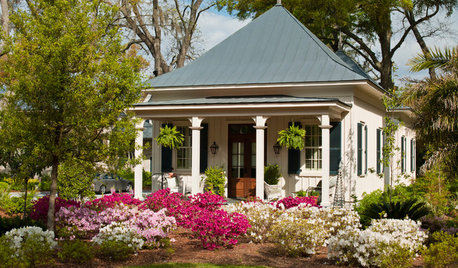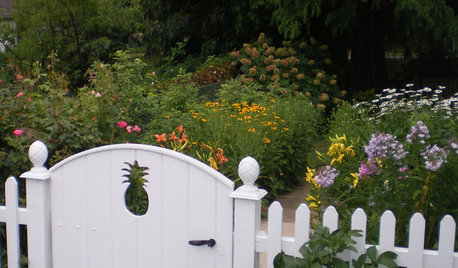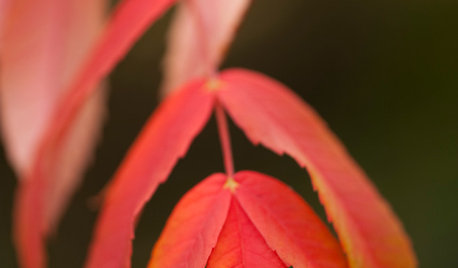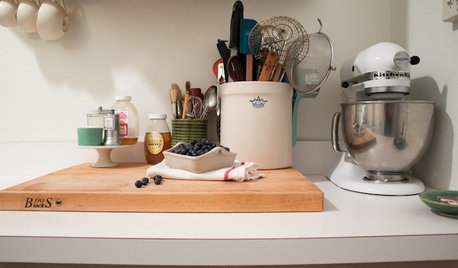We have for the past month or two begun the brave attempt to mutually design a New England Garden. If you have not joined us before please dont hesitate to jump in. When your name is randomly chosen you will have 24hrs to respond if your not available its not a problem we just move on to the next participant.
Below is a summary of our accomplishments to date.
Zone 4b-Cady
25% of the plantable space be in full sun, 50% in part-sun to part-shade and 25% in full shade AT THE PEAK OF THE SUMMER.
Similar to this summer conditions scores 50% of full sun and 50% of part-sun during the winter and early spring  EGO
soaker irrigation from an automatic system with an overhead sprinkler hitting one half of the full shade part of garden which causes this area to be watered twice as much. Â kt
quick-draining sandy soil, well amended with compost. Â Solana
WHOLE property to be open for deers, rabbits, woodchucks, squirrels etc, whatever enemies you could imagine. No fencing allowed.
OK, no moles and voles in a 5 miles radius. Â EGO
contemporary country garden for a mid-19th-century farmhouse surrounded by a lichen-encrusted, low fieldstone wall. Â Cady
2.5-3 acre plot in the shape of a rectangle the front of the property abutting the road is 400' wide and the length of the property is 900' - kt
1. Kitchen Garden (fruit veggies, herbs) 150' x 100'
2. Perennial Border 20' x 100'
3. Woodland 100' x 100'
4. Cutting Garden 25' x 25'
5. Historical/Heirloom Display 30' x 100'
KITCHEN GARDEN
Hardscape  Marty- for the kitchen garden I can do. But 150'x100'?????? That's a lotta edibles!!! But okay, here we go.
Garden will be parceled into four distinct sections:
Veggies 20'x70'
Fruit 100'x100'
Herbs 30'x30'
Household Goods (since we're keeping with tradition)
Veggie garden will be planted in rows approximately 3' apart the short way, providing for about 25 varieties of food, including vining plants. Veggie garden's only hardscape would be requisite cold frames and one bench.
Herb Garden will be round - no brick/too weedy for path planting - but native granite slabs splitting the garden into quarters with a 5' round center.
Around the perimeter, 1' tall rock wall made with same native granite. A 3' opening at each end of each path.(A lot of houses like the one we chose had flat stone walls around herb gardens to use as heat conductors for maintaining temperennials from seed saving)
Fruit area would stay grassy and include complimentary varieties of trees. Nothing elaborate here, either, except for an arbored walkway going from the herb area to the fruit area where vines can be grown.
Household area in the most inconspicuous spot possible as luffa, cornbroom and weaving materials are rather unsightly.
So, imagine standing on the back porch at the kitchen door. Immediately in front of you is the herb garden with sundial in the center and a few nice pieces of terra cotta on the wall to utilize that extra radiant heat. Walk straight through the herb garden and reach the vined arbor approximately 8' wide and tall. About 20' long. Made of wood and painted white to match the house. Fruit trees on either side of the arbor and at the end an additional 70' straight. Depth is now 150'
On either side of the herb garden, veggies extending 20' depth and each bed 30' wide. (there's your 100') 5' grass area between sides of herb garden and veggie bed s. One side is early stuff, the other side is later stuff for ease in care. Dedicated raised areas for perennial veggies (asparagus, rhubarb, etc.) in early stuff side. Cold frames in both gardens, and a stone bench near where the herb garden meets the fruit.
Household goods stuff takes up the 10 x 30' between veggie garden end-depth and start of fruit trees on both sides.
Realize that this design puts most flowers and ornamental trees in the front, but since we didn't get house setback from the road seized the opportunity!!!!! Here's hoping the back of the house is south-facing, and that the defined woodland is behind the house to abut fruit trees since we're deer-proof.
VEGETABLE GARDEN
Clematis 'Polish Spirit' - Vtskier
Turnips - Cady
Rhubarb - Mad Gal
Spinach 'Prickly-seeded ' - kt
Carrots 'Early (Scarlet) Horn' - Bug
Tomato 'Early Cascade' - Nhbabs
Peas 'Sugar Snap' Tee Pee - Cady
Beans - green, yellow and purple with Dill - Mad Gal
Basil 'Lettuce leaf' - nhbabs
Fennel - Florence - kt
Asparagus - Vtskiers
Apple 'Golden Russet', espaliered - Martie
Eggplant - Bug
Swiss Chard 'Ruby Glow' - Cady
Onions - Martie
Cherry Tomatoes - Vtskier
Garlic  Nhbabs
Globe Artichoke - kt
half-dozen sweet bells if they have freezer space for winter use, 4 'Mexi-bells' if seed were still available (slightly warm, wonderful for salsa which I put up in dozens of pint jars each year), 2 Jalapeños, a 'Cayenne' and 3 'Thai' peppers for both heat and their beautiful, compact size. - Solana
French Breakfast Radish - Bug
Red Leaf Lettus - Mad Gal
HERB GARDEN
Horseradish  nhbabs-chimney flu
Rue - Solana  edging
Curly-leaf parsley - (superior to flat leaf) - Cady
Lovage - Bug
Dill - vtskiers
Bronze fennel - kt
Winter savory - kt
Broad-leaf parsley  (inferior to curly)  mad gal
French tarragon - nhbabs
Bee balm - Cady
cascading ornamental oregano "Origanum Libanoticum" Â idabean
Dark opal basil - vtskiers
Lemon balm - solana - chimney flu
Chives  Cady
Sage- The tri-colored variety, dwarf nasturtium  nandina
Salad Burnet  nhnarc
Rosemary  Bug
Lemon Verbena  luvherbz
Thyme - Mad Gal - should we make bug happy with wild thyme?
Lavandula angustifolia 'Lady' & Salvia elegans 'Pineapple' - Marty
Culantro Eryngium foetidum-Solana
lemon geraniums - nhbabs
Anise hyssop (Agastache) Â Cady
garlic chives (Allium tuberosum)- Nandina
basil-Bug
Mentha cordifolia "Kentucky Colonel."
Roman chamomile nhnarc
Fruit 100'x100'
Fruit area would stay grassy and include complimentary varieties of trees. Nothing elaborate here, either, except for an arbored walkway going from the herb area to the fruit area where vines can be grown.
We now need to begin work on the Fruit Garden and nhbabs it is your turn














mad_gallica (z5 Eastern NY)
runktrunOriginal Author
Related Discussions
Sloped garden design with big challenge
Q
Garden Design Challenge - Herb
Q
Design Challenge - For fall planting
Q
Design challenged, but hopeful!
Q
ego45
runktrunOriginal Author
gardenbug
mad_gallica (z5 Eastern NY)
diggingthedirt
Cady
Cady
ego45
Cady
runktrunOriginal Author
Cady
runktrunOriginal Author
gardenbug
ego45
ego45
runktrunOriginal Author
runktrunOriginal Author
Cady
diggingthedirt
nandina
runktrunOriginal Author
gardenbug
Cady
diggingthedirt
solana
Cady
ego45
gardenbug
runktrunOriginal Author
gardenbug
Cady
mad_gallica (z5 Eastern NY)
nandina
Cady
runktrunOriginal Author
Cady
runktrunOriginal Author
gardenbug
runktrunOriginal Author
Cady
mad_gallica (z5 Eastern NY)
Cady
runktrunOriginal Author
NHBabs z4b-5a NH
nandina
runktrunOriginal Author
diggingthedirt
diggingthedirt